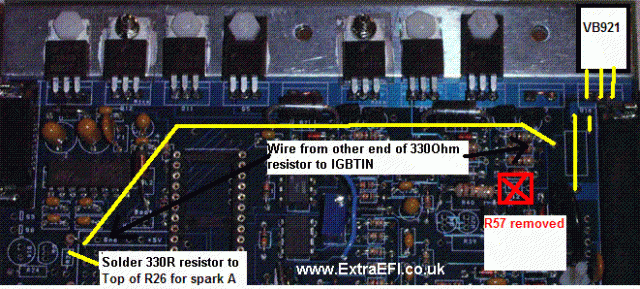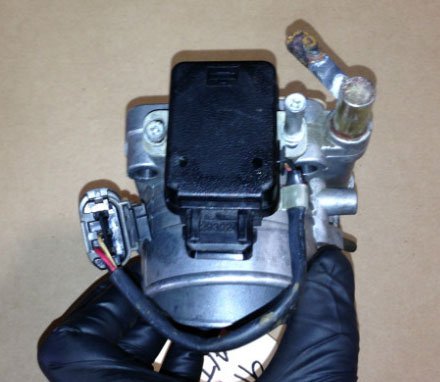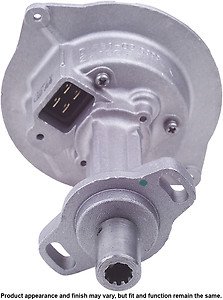-
Posts
351 -
Joined
-
Last visited
-
Days Won
2
Content Type
Profiles
Forums
Blogs
Events
Gallery
Downloads
Store
Everything posted by Metro
-
Buying a HKS type 2 would be easy, but I'm trying to find something that wasn't forged with unobtanium
-
I'll most likely go with aluminum I just wanted to rule out my crazy fiberglass idea. I've been thinking of adapting something from a 2jz or rb26, mostly because they're cheap and I think the port spacing is pretty close. I found one site in the UK that will sell a universal plenum that looks quite a bit like what's being offered on the L6 group buy manifold. I would just need to get a backing plate welded on. That would probably be the nicest way to go. The more I think about it, I probably should have just started with RB26 throttle bodies and its plenum. Do you have any specific examples? I've looked at quite a few six cylinders engines for inspiration.
-
So recently I got a hair up my ass to go with ITBs, mostly because I love the sound and also because I would like a new project. If my Frankenstein setup works, I'll post more about it later. I have just about everything sorted out, the problem I'm running into is I'll need an airbox/plenum that will handle boost. I've spent days searching various car forums trying to find something that will work. Obviously carbon fiber works, but that's outside of my skill set and paygrade. A fabricated aluminum plenum would be nice, but welding aluminum with my Lincoln SP-135 sounds questionable at best. So my next thought would be making something out of fiberglass. I was thinking a two part box that would bolt together. But from what I've been reading, fiberglass doesn't play nice with gasoline and can only handle up to around 3-400°. There's also the fact that I couldn't find anyone who's successfully done this makes me think it's not worth pursuing. Most of what I read was in regard to fabricating an intake manifold. An intake manifold would be directly exposed to fuel and seem to be at greater risk from a backfire shredding it. In my mind, an ITB plenum wouldn't be as harsh of an environment. Fiberglass is probably a terrible idea, but I was just wondering what the gurus here think of it.
-

Flywheel and clutch the wrong size?
Metro replied to IncompetentOne's topic in S30 Series - 240z, 260z, 280z
The 280z 2+2 should have a 240mm flywheel like the turbo cars. The PO probably didn't know about it or didn't bother to swap it over. Any 240mm flywheel will work, I'm using a flywheel from an 80's truck. The problem is when you mix and match the throwout collars and pressure plates. Off the top of my head the correct collar will be shorter than the one for a 225mm because the 240mm pressure plate is thicker. There's so many different collars that were used over the years it's hard to identify them unless you know what you're looking for though. If you use the wrong collar, you won't be able to disengage the clutch. For a long time I was using a rounded off 4" bolt and larger master to get extra throw on the slave cylinder. -
According to DIYautotune's article on it "The thermal shutdown range is between 185 and 210 degrees C with a typical shutdown at 195C." I would think your case should be very warm if the ignitor was cutting out. A few years back when I thought I had an ignition problem, I tried various dwell settings, high and low, and could barely get the ignitor warm. With an MSD blaster coil it worked down to 1.6ms before it started cutting out. It should work fine at 3ms, I don't remember what I used exactly, I think I just used the stock values MSNS-extra was loaded with (chevy v8?). I'm using GM DIS coils now, but I still think I'm running close to the default settings without any issues up to 6800rpm. If you think something is overheating, I would just run it with the case open and feel around. I've never used it, but an old trick for overheating components would be blast the board with an upside down can of compressed air to instantly drop the temperatures.
-
Why does he have two fuel pressure regulators and what looks like a bosch 044 fuel pump on a carb'd motor. I r confused.
-
Unfortunately I don't have access to either ignitors (they're hidden away on my car) but it's the transistor pictured here: I don't know if it's one based off of the markings and I seem to recall neither will say exactly what they are. If it's missing, you can buy a new one from DIYautotune.com http://www.diyautotune.com/catalog/bosch-bip373-coil-driver-mod-kit-p-230.html
-
The ignitor is on the heatsink located at the top right on the very end next to the DB37 connector. You might have a VB921 if it's an old kit, either one works. The BIP373 is a little nicer because of the thermal shutdown.
-
I went through two ECUs, two distributors (turbo and N/A), two different CAS systems, onboard ignitor and GM 4pin HEI module.. and it was dirty injectors. But your CAS error is troubling, it's too bad you haven't fixed that yet. I should have figured my problem out sooner. I had the ability to double check everything via a laptop and didn't pay much mind when my fuel values were increasing by 75-100%. I have a tendency to jump to conclusions when it comes to troubleshooting my car. It stands to reason since you've checked everything out and replaced multiple components that it's somewhere else. You need to start looking at the common elements between them and hopefully it's just the injectors.
-

Noob Looking For Serious Help (Attempting to Turbo)
Metro replied to Ozzie831's topic in S30 Series - 240z, 260z, 280z
The Bowling & Grippo MS1 code is fuel only, he will need to use the MSnS-extra code to control spark, if he hasn't already reflashed it. The v2.2 board is missing a lot of the features of the v3 board. Fortunately, he has an MSD box to go along with the v2.2 board. The mods to get a MSD box working with a v2.2 board are surprisingly simple. http://www.msextra.com/doc/ms1extra/MS_Extra_Ignition_Hardware_Manual.htm#msdout22 -
If it's still screwy after the other ecu, I would definitely check the injectors. I've had dirty injectors cause lean spots at specific rpms (2500rpm, and 4000rpm in my case). Later when I had the original injectors cleaned by witch hunter performance, I was a little surprised to see the before and after only improved by +4-5%. I guess they were screwed up just enough to cause problems.
-

Noob Looking For Serious Help (Attempting to Turbo)
Metro replied to Ozzie831's topic in S30 Series - 240z, 260z, 280z
Fix #5 and you might fix #2, the rest are kind of irrelevant until you get that fixed. MS might be resetting when you're trying to start it or it's something as simple as you wired it up so that the main relay shuts off when you turn the key. Either way, no RPM in tunerstudio means MS is just a $200 paperweight. You need to figure out why there's no RPM. Don't confuse your dash tach with megasquirt's RPM, they're different things. Focus on getting the RPM signal to appear in tunerstudio. Then once it's running, you can try and figure out why your dash tach isn't working. I would start with the wiring for the optical distributor. #4 it's very unlikely you'll find a tune you can just load into MS that will work out of the box. I would download Cygnus' tune, look at the fuel, afr, and spark maps, and either type them in by hand to your project or use the export/import tables feature. There's also a sticky by moby with screencaps of all my Msns-extra settings with stock injectors. At the very least you can start with that and it will get your car idling. -
I might be confusing you as well. The pigtail hanging off the bottom is for TPS, the bosch connector is something else, all part of the same unit.
-

Utter refusal to run at reasonable AFR's, noise problems
Metro replied to Xnke's topic in MegaSquirt
Just tossing my two cents out there regarding noise. The only time I had problems with noise and MS resetting was when I had my ignitor mounted on the MS board. I put a cap on the boot header, did the injector PWM fix, nothing helped. Then I moved the ignitor outside and all the noise went away. So a simple fix might be to run a separate ground to your ignitor. Disconnect the ground leg from the board and run a wire from the ignitor straight to the engine block. -
You need a potentiometer style tps. I used a 240sx TB and TPS. It will be three wires: power, ground, and the signal to MS. The sensor I happen to have looks just like the throttle switch on the stock TB, but it has a pigtail hanging off the bottom. You'll want to use the pigtail and not the three wire bosch connector. I think it's an on/off switch like the L28et's TB, either way it won't work for MS.
-
I used the large 4 pin plug under the dash to hook into my 76's harness. You only need two of the wires connected to it. One supplies 12v when the ignition is on, the other carries power to the fuel pump (might be green with blue).
-
You can adjust the trigger angle with the engine running. You'll want to verify your timing by locking your advance to 10 degrees by setting "fixed angle" to 10. Then adjust your trigger angle until your timing light reads 10 degrees. The 60 degree number you see floated around is for the L28et's CAS or optical distributor. MS needs a trigger angle that is either 10 degrees higher than your maximum spark advance (50 degrees for example) or under 20 degrees to enable "next cylinder" mode. When I used my 76 VR distributor I had to adjust the mounting plate for the VR sensor to get a usable trigger angle. After adjusting the plate (it's in the FSM) I was able to get a trigger angle around 15 degrees. But when I was using a GM 4pin HEI module, my trigger angle was around 120 degrees. You will always want to verify the trigger angle for yourself.
-
Yeah didn't even notice that, D14, D15, and D16 need to be set as spark outputs. Your current config setup is fuel only. I'll be honest with ya dude, a lot of these "problems" just seem to be a total lack of understanding how MS works. I don't want to hold your hand anymore, you need to read the manual and understand the settings.
-
You have it set as a 36 tooth wheel, it's 30. Wheel decoder routine should be 24s97, unless you have a reason to use v25. Set your trigger angle back to 60 and check your timing. Using the CAS bracket, I think the range of adjustment is about 20 degrees each way. So in the middle (where the line is inscribed on the back) the TA is about 60°.
-
Well then it completely depends on your routing, I can't really say. I have 2.5" pipes and there's still plenty of room, I just have to take off one of my pipes to get to the low pressure fitting.
-
There's plenty of room for the AC compressor and lines with the 280zxt parts. Even when I was still running the stock ECCS with the AFM, I had plenty of space for everything. The J-tube kicks up so it's inline with the intake manifold, there's tons of room below.
-
Your board looks good. As for software settings, there's really only one: under ouputs and codebase select MSnS^ as your distributor type. Since you said you built this yourself, you should go over all the instructions for the VR conditioner. I'm not sure guide you used, but the manual on the main MS site is helpful for checking your install step by step as you build each circuit. Go to step 51 where it talks about the VR circuit and double check that everything was installed, diodes are orientated correctly, and transistors legs aren't bridged with solder. In my experience VR sensors don't need any adjustment to pick up the RPM signal when cranking, but you can try adjusting your trim pots. Usually I've only had to adjust the pots to fix noise at higher RPMs. Turn both pots all the way counterclockwise until they click or you feel the screw slide. It sounds like you already did this, but just saying. I would start adjusting the bottom pot half a turn at a time and if you still haven't seen any rpm reset the bottom pot and start moving the top pot. The top pot has more to do with the shape of the signal and the bottom is more for noise filtering. You would need an oscilloscope and knowledge of what it's showing to set these perfectly, which is beyond me. It might be helpful to take your distributor out and just spin the shaft instead of constantly cranking the motor over. I'm assuming the dizzy is what was used previously to MS and it's in good working order. You might want to check the air gap for the sensor anyway. Connect a multimeter to see if it's creating AC voltage when you spin it.
-
The VR and 81 turbo distributors use a slot style input on the bottom of the distributor. The later 82-83 optical distributors use a star like input. I read somewhere it was to reduce play and provide a more accurate signal for the ECCS. Grabbed this off ebay, it's the bottom of the optical distirbutor:
-
If you still have the VR distributor from your 77, you could use it instead and you wouldn't need to change the oil pump quill shaft for an optical distributor. The only thing to consider is the VR distributor will mount 180º out and your plug wires might not reach.
-
The '81 CAS should work and it is wired up like the optical distributor. There's just one catch, I couldn't get mine to work very well. MS could idle and run up to about 4000rpm and then it would lose the RPM signal. I might have had a bad sensor or some other interference with the signal. Either way, I gave up trying to fix it and went with a locked '76 VR distributor and ran that setup for years. If you have the 83 optical distributor, just use that. It's guaranteed to work (provided it's in good shape).



